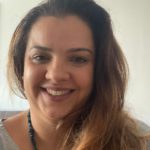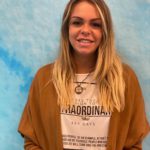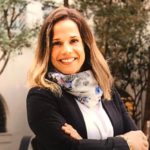The “Third Educator” and creating inspired learning spaces.
How can the intentionality behind the organization of spaces be visible to children?
General topic of interest
If we look closely at the eight Reggio principles in light of research on children and place, we find that they also coincide with how young children use and perceive space in unplanned ways, that is, with Rasmussen's notion of “children's places.” For instance, aesthetics and transparency draw our attention to how children are attracted by and curious about anything that engages their senses. The principle of flexibility articulates how children will often use objects in their play in ways not explicitly intended by the teacher or curriculum. Active learning recognizes how children learn through experimenting with and manipulating objects while bringing the outdoors in acknowledges children's curiosity about the natural and social worlds surrounding them. With that in mind, Pre K4 wants to research about possibilities of how can we make this happen in our groups to enhance children’s learning journey as protagonists of their own process.
Reference: Rasmussen, K. (2004). Places for children—children's places. Childhood, 11 (2), 155-173.
Participants
Pre-K4 learners from three different groups.
Data collecting approach
We collected data through observations done over the period of time of 7 days. Our approach to data collection has been one of observation and recording of data through photos, videos and transcriptions of the children’s utterances.
Data collecting example
We collected data through photos, videos and notes made during the observations of how the children engaged with the proposed learning corners. These observations took place over a period of 7 days in order to allow a variety of stimulations, such as non-structured materials, light tables, natural elements and letters, as well as observations of how the children reacted to the changes made to these corners daily.
Emerging results
In our observations, it was possible to see how the learners engaged with unstructured materials in a variety of setups. We observed how they manipulated these materials organized in the different learning corners, creating their own contexts for play and interactions. The explorations were their own, as there were no instructions given by the educators on what to do. In addition, if the learners chose not to engage with any particular stimulus, that was accepted as well; however, we observed that the children did demonstrate curiosity towards each material, even if not every day.
Reflections
We learned about the importance of providing planned, organized and stimulating spaces that invite the learners to create their own experiences, making connections and testing hypotheses with the added benefit of enabling opportunities to self-regulate potential conflicts of sharing. Our observations included the language learners chose to use when asking each other for extra materials, and the educators were asked to intervene only very few times. Even this outcome had been expected, since some of the materials had been purposefully in a smaller quantity, to elicit how the children would share them. Our major take away then is that the organization of spaces does indeed make their intentionality visible to children, allowing for the educators to take a step back and observe what emerges from the interactions, benefitting the learners to have their potentialities nurtured by their learning spaces. The expected curriculum standards for Pre-K 4 were also contemplated and emerged in elements of the children’s curiosities, as opposed to those that might have been introduced by the educator in a fixed curricular schedule.
Next steps
Our aim is to expand the possibilities of these “children’s places” (Rasmussen, 2004), experimenting with and combining the materials present in our research to see what more connections the children can make visible to their educators. Listening to the children in this part of the process is essential to take their explorations further. Hopefully, even in this socially limiting context of a pandemic, we will find a way to share their voices and experiences with each other in Pre-K 4 A, B and C in order to increase the possibilities for their learning beyond their own groups.











